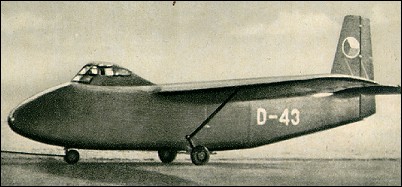|
| Four-seat liaison and training monoplane of similar type to the Yak-12 but powered by a 108kW M-11M engine.
 | A three-view drawing (800 x 484) |
| CREW | 1 |
| PASSENGERS | 5 |
| WEIGHTS |
| Take-off weight | 6750 kg | 14881 lb |
| Empty weight | 3000 kg | 6614 lb |
| DIMENSIONS |
| Wingspan | 26.2 m | 86 ft 11 in |
| Length | 18.4 m | 60 ft 4 in |
| Height | 7.5 m | 25 ft 7 in |
| PERFORMANCE |
| Max. speed | 300 km/h | 186 mph |
| Barry, 08.12.2016 11:58 Well this really is the most unusual of "4 seat observation, training and liaison monoplanes". Where exactly was the engine and propeller hidden?
Now some may think that this is the largest post war glider built by the soviets and they would be right. Some 413 were built with a few going to Czechoslovakia as the NK 14. It was the first and only glider to fly to the arctic and it had payload of 3,500 k.g. (7,000 lb). It was, though, by standards an anathema when the rest of the world was looking at transport planes and helicopters to shift their troops and kit. reply | | Leo Rudnicki, e-mail, 23.07.2009 08:34 Of course there were two Yak-14's, the transport glider towed by Il-12's and the Yak-12 Yak-14. That's why NATO code names were invented. reply | | Bill Downing, e-mail, 23.07.2009 07:06 Are you certain about this ones I.D.? From the artists conception (typical heavily airbrushed for Soviet aircraft pictures up into the mid 70's) this pile of F.O.D. looks more like the packing case an AIRSPEED HORSA glider was shipped in, I see zero evidence of any form of powerplant.
I also seriously doubt this flying one car garage could get to 186 MPH without shedding the wings. reply |
|
Do you have any comments?
|
| 
COMPANY
PROFILE
All the World's Rotorcraft
|











